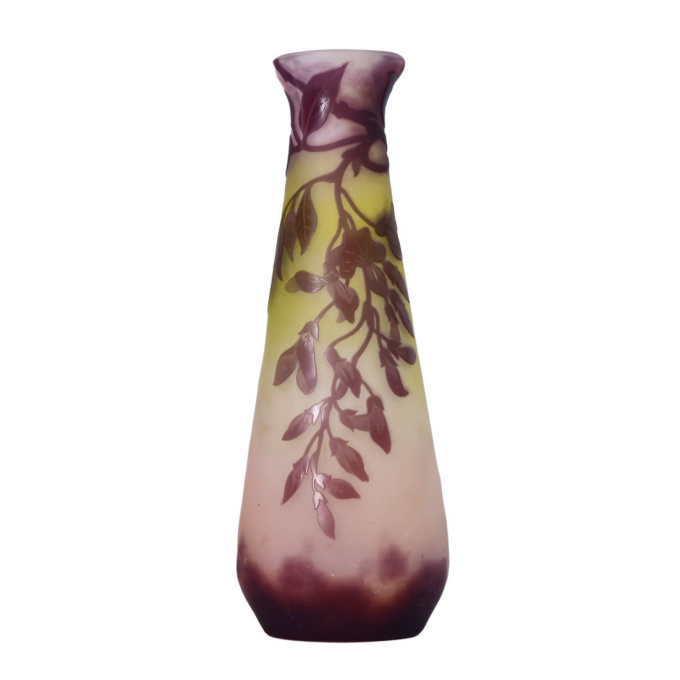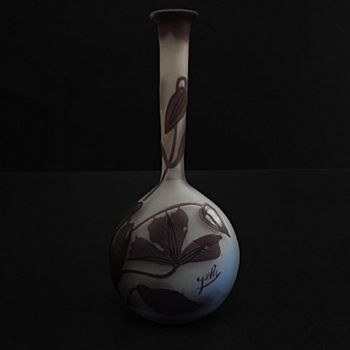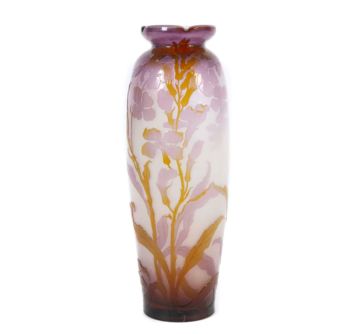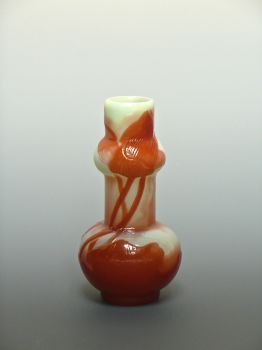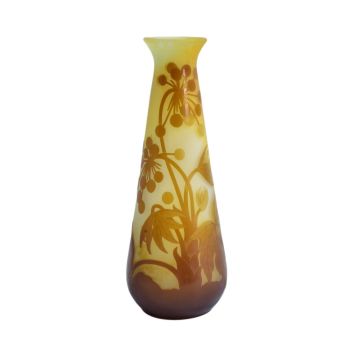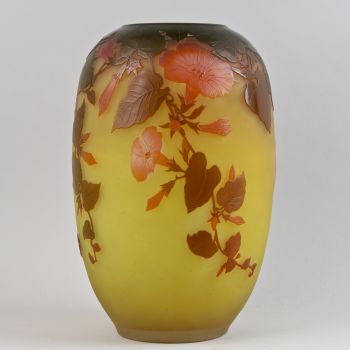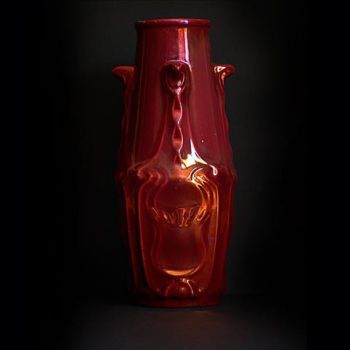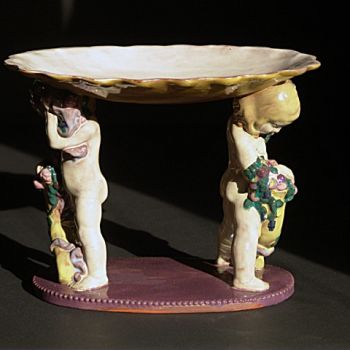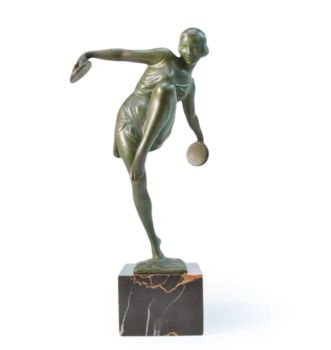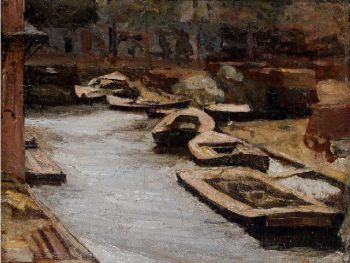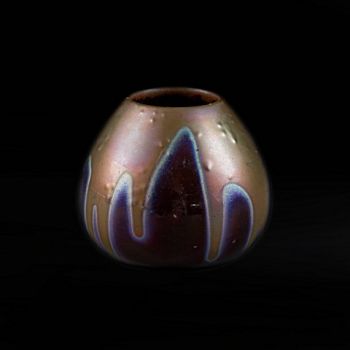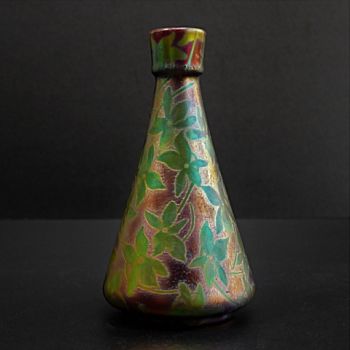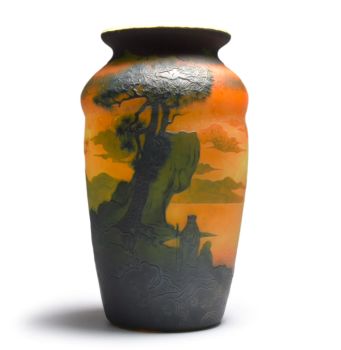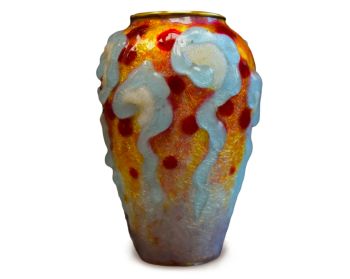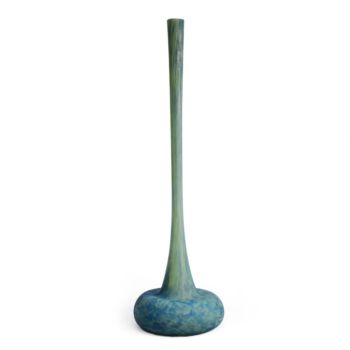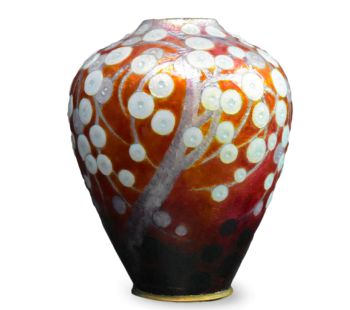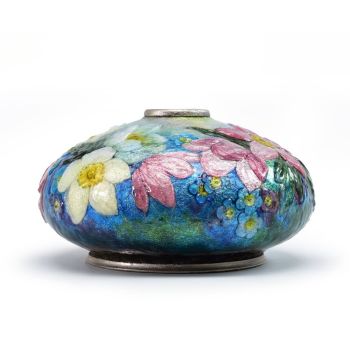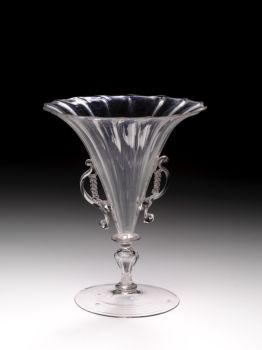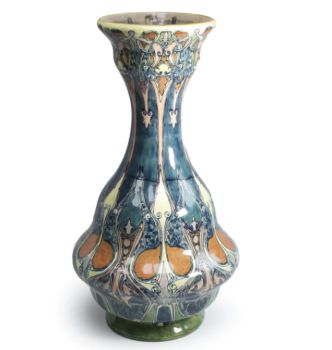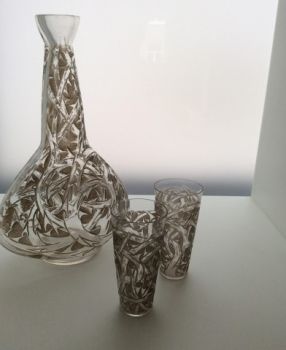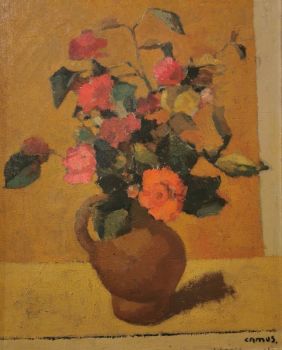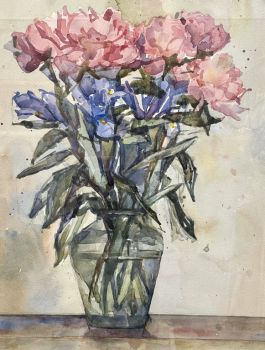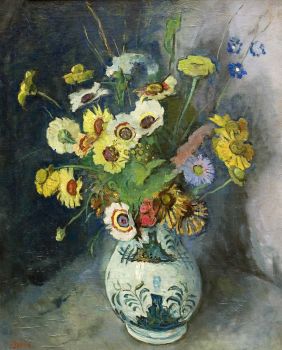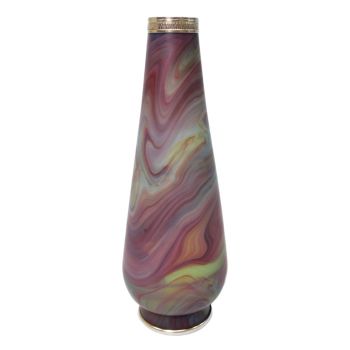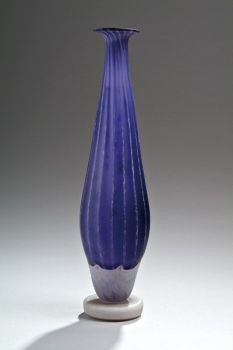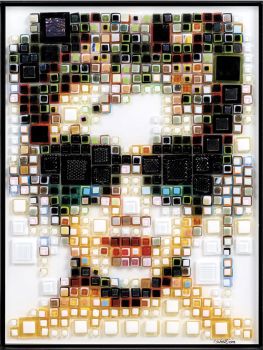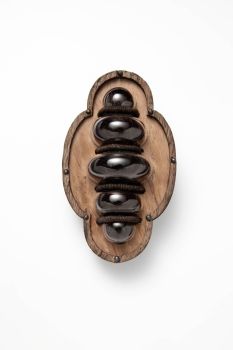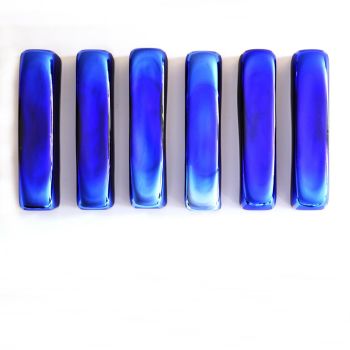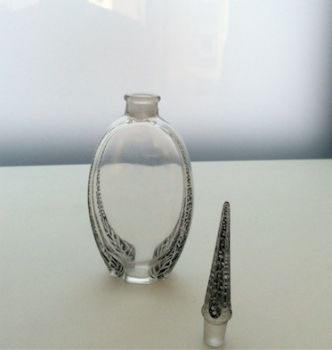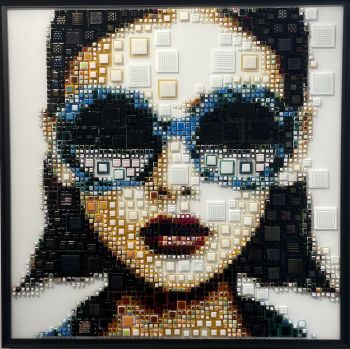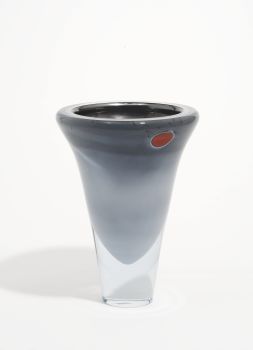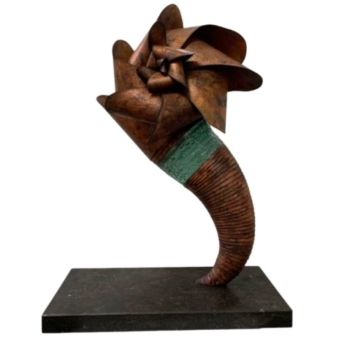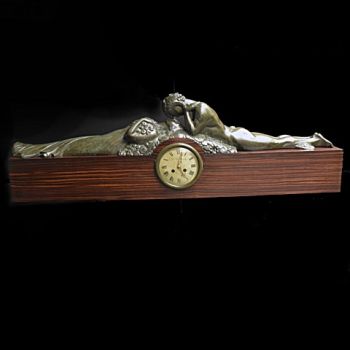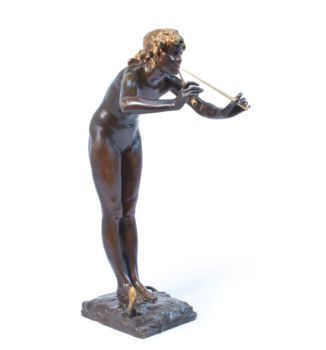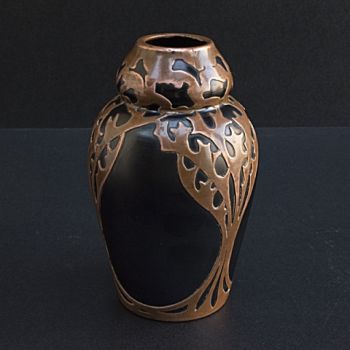Glycines 1902
Emile Gallé
Glass
30 ⨯ 12 ⨯ 12 cm
€ 2.250
Het Ware Huis
- About the artworkGlycines
1902, France
Normale prijs
€2.250,00 EUR
Slanke omhoog rijzende vaas in violet en geel-groen tinten, De neerhangende blauwe regen maakt de tegenovergestelde beweging al de oprijzende vaas. Dat geeft dynamiek aan deze vaas. - About the artist
Emile Gallé was a French artist in glass, wood and ceramics. After several apprenticeships in various European cities, Weimar and Meisenthal amongst others, Emile Gallé became a partner at his father’s glass and faience decoration business in 1867.
Ten years later, he took over the family business and extended its activities to cabinet making in 1885. Previously acknowledged at the Clay and Glass Exposition in 1884, Emile Gallé was honored at the 1889 Paris World Fair with three rewards for his ceramics, glasswork, and furniture. Unfortunately, and to the great regret of Emile Gallé, ceramic work was no longer popular amongst the public, thus he oriented his focus to glasswork, a domain in which he developed and created new fabrication procedures. His research lead to the registration of two patents in 1898, one of which concerned the glass marquetry and the other on glass finish.
His work expresses throughout multiple references his diverse interests, in which nature plays a dominant, but not exlusive, role. His patriotic and political commitments were best expressed at the Paris World Fairs of 1889 and 1900 in such pieces as The Rhine Table (which calls for the return of Alsace-Lorraine to France) and the spectacular installation of The seven pitchers Marjolaine (for the rehabilitation of Dreyfus).Involved early on in the renewal of decorative arts, Emile Gallé distributed in his French, German and English warehouses quality mass-produced work thanks to the industrialization of production. In 1901, he was the founder and the first president of the Ecole de Nancy, the Alliance Provinciale des Industries d’Art.
Are you interested in buying this artwork?
Artwork details
Related artworks
- 1 - 4 / 10
- 1 - 4 / 24
- 1 - 4 / 24
Unknown artist
A Japanese bronze Hu flower vase, Edo / Meiji, 19th century19th century
Price on requestMenken Works of Art
1 - 4 / 24Frères Daum
Daum Nancy – “Paysage Soleil Couchant” vase with two applied handles1900 - 1910
Price on requestAntiques Emporium
1 - 4 / 24- 1 - 4 / 12

